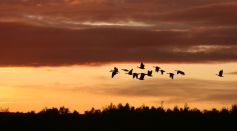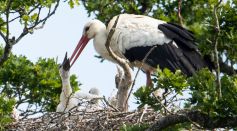Tags: Migration

European Migratory Songbirds Navigate with Magnetic Stop Signs

Armadillo Invasion: Why Did They Choose the Carolinas? Scientists Aren't Sure But They're Here to Stay

Hummingbirds Found with Unique Strategy to Overcome Conditions During Migration
Migration Makes Microorganisms in Bird's Stomach Change and Evolve
Biggest Marine Migration of Sardines Found Pointless With No Impact to Evolution While Most of Them Die in the Process

Large Land Birds Fly Over the Open Ocean Without Taking A Break or Rest: Here's How They Do It

DNA Sample from Ancient Bear Skull Offers Insight on How Their Ancestors Migrated to Japan

Tarantulas Almost Everywhere Because of the Continental Drift
Here's How City Lights Both Attract and Repel Migratory Birds
Human Migrations in the Past Gave Rise To Vitamin D Deficiencies in the Present

Biggest Mammal Migration in the World is in Danger
Cutting Edge Tech Reveals Bronze Age Migration Routes of Livestock Herders
Song Patterns Among Fin Whale Change Over Time, Surprising Scientists
Birds Adjust Their Migratory Patterns With Green Vegetation

Scientists Monitor White Storks in Hopes of Finding Lost Migratory Habits

Monarch Butterflies' Spectacular Migration Is at Risk – an Ambitious New Plan Aims To Help Save It

Alaska Salmon Grew Smaller Over the Past 60 Years
Genetic Studies on Ancient Caribbean Inhabitants Reveal a Mosaic of History Contrary to Traditional Research
The Next Great Migration: Immigration Is the Solution to Climate Change
Satellite Follows ‘Mammoth Journey’ of Five Cuckoos on an Epic Journey
Most Popular

Microplastics Are Everywhere — How Plastic Pollution Threatens Wildlife, Soil, and Water

Brain Health Aging Guide: Effective Strategies for Cognitive Decline Prevention and Lower Dementia Risk

Mitochondrial Health and Aging: How Cell Energy Drives Modern Anti-Aging Science

How Scientists Use Radio Telescopes to Search for Alien Signals Across the Universe





